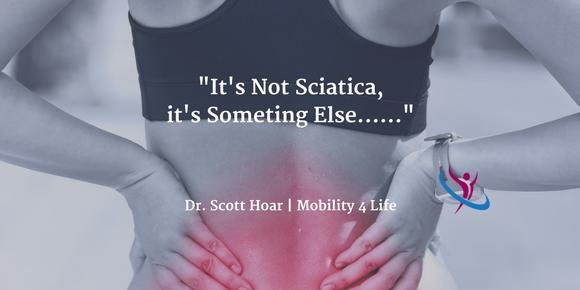
If I had a nickel for every time a patient walked into my chiropractic and sports medicine clinic and said, "I've got sciatica", I'd be a rich man by now. Sciatica gets so much press, but it's more commonly over (self) diagnosed than any other condition. Here's a great test to see if you're actually suffering from it: Bend over and touch your toes. Go ahead.... do it now.
The Sciatica Self Test
If while bending down into a toe touch, you feel a sharp, electric "zing" running down the back of the thigh--then you just might have sciatica. If you feel anything else... no pain or a different kind of pain than I just described... then you probably don't have sciatica.
Did that hurt? If it did, read this:
Causes and Cures of Sciatica
If you're dealing with sciatica, click here to find what you can do about it.
If not, you just might have Sacro-Iliac Joint Dysfunction
One of the more common conditions that people have that causes lower back or hip pain that they think is sciatica is actually sacro-ililac joint dysfunction. If you have pain in this location, this might be you.
What is Sacro-Iliac Joint Dysfunction?
Let's look at the pelvis for a second. Basically, it's an upside-down triangle, with elephant ears on either side. These are the weight-bearing joints that connect the torso to your hips. They are supposed to be extremely stable with little to no motion occurring in them. However, people with excessive stiffness in their hips or in their upper torso can end up starting to move those sacroiliac joints too much. A common presentation in my office is when the left hip is too stiff, the right sacro-iliac joint becomes overly flexible (a.k.a. unstable), and starts causing pain. The same condition could occur on the opposite side as well.
Sacro-Iliac Joint Exercises
If you think you're suffering from this condition, a great first exercise is single leg bridges. This is an exercise where you learn to move one hip while keeping the pelvis relatively stable and safe. If you do have it, performing this exercise on one side feels drastically different than the other side (whether it's pain, stiffness, or just difficulty in performing it). Try this exercise:
Single Leg Bridges with Hip Flexed
Further Exercises:
If you truly have this condition, the single leg bridges (video above) are just a first step in the healing process. I'd recommending enlisting the help of a sports medicine professional to help you re-train your hips and pelvis to move in a safer manner to completely get rid of your condition. Having said that, here are some further exercises which will help to stabilize the pelvis.
Our long-term goal here is to ensure the proper flexibility and movement of the hips while maintaining proper stability and control of the pelvis and lower back. Once we've solved that problem, we'll solve your lower back pain. Good luck!
References: